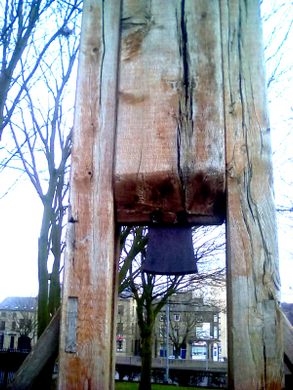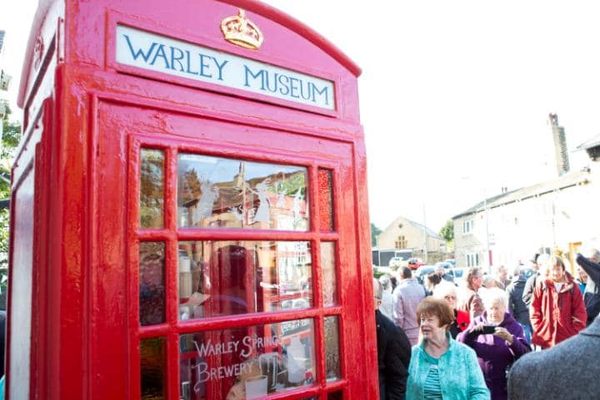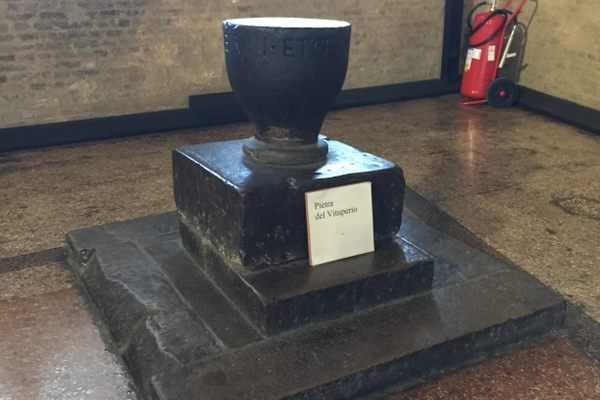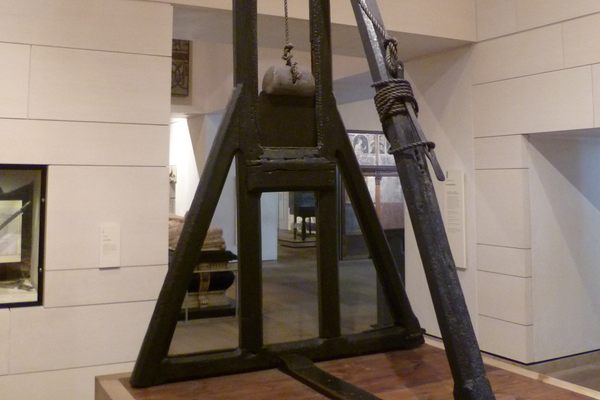The Halifax Gibbet
A copy of the brutal decapitation device that predated the French Guillotine by about 200 years.
The term “gibbet” had a wide range of meanings in medieval England, but all relate in some form to execution. The Halifax gibbet was a 16th-century device built to replace the axe as the means of carrying out public beheadings. According to the local manorial laws, any person shown to have stolen goods worth more than 13 1/2 pence (less than $20 today) would be punished by death by decapitation.
Invented two centuries before the French Guillotine was introduced as a “humane” method of execution, the Halifax gibbet was very brutal. It is reported that the cutting edge was never sharpened, relying instead on the massive weight driving the blade downwards, essentially crushing the neck and ripping off the victim’s head.
The device was operated by raising the weighted blade with a rope and securing the rope by a wooden peg, which was in turn attached to a long rope. At the appropriate time the gathered townsfolk, including the jury who convicted the thief, would symbolically pull on the rope to release the pin, indicating that they supported the decision of the court.
The origin of the strict theft law is disputed. Some say it originated to deter thieves who were stealing lengths of newly made woolen cloth (called kersey) that had to be hung up outside to dry (with little security). But the custom may well have been a remnant from Saxon laws that originated much earlier. In either case, the laws were popular in part because, without recourse to the local laws, the original owner could never recover his or her stolen property: If a felon was convicted by the King, the stolen goods would revert to the Crown as it was considered to be the property of the convicted man.
Almost 100 people are known to have been beheaded in Halifax between the first recorded execution in 1286, and the repeal of the law in 1650. Around half of the executions were carried out with the gibbet. The device was dismantled after the last beheading, but in the 1840s the stone platform where it had stood was rediscovered. The current (non-working) replica was constructed on the original site in 1974.
It’s believed the Halifax gibbet is the source of a reference to the town in The Thieves Lament, which states “From Hell, Hull or Halifax Good Lord preserve us.” This was said to be a parting prayer spoken by thieves in medieval Yorkshire as they went their separate ways. It is also part of the chorus of “The Dalesman’s Litany”—”From Hull, and Hell and coaling-boats, good lord deliver me.” The coastal town of Hull also had gibbet laws and gibbets, but the devices in Hull were constructed in the estuary at the low water mark, so the convicted felons chained to them would be drowned by the rising tide.























Follow us on Twitter to get the latest on the world's hidden wonders.
Like us on Facebook to get the latest on the world's hidden wonders.
Follow us on Twitter Like us on Facebook